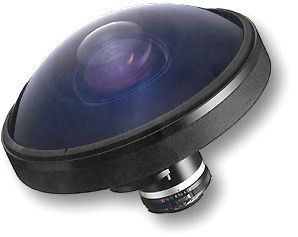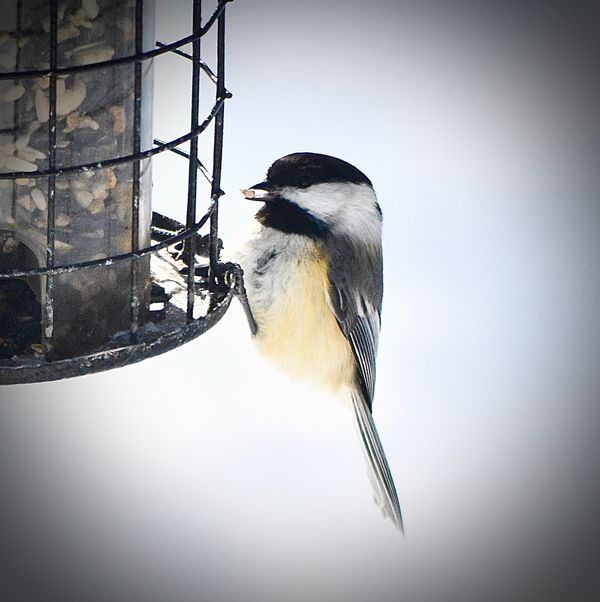Question about light gathering potential in larger diameter lenses
Feb 13, 2019 09:03:55 #
tomcat wrote:
I have searched the internet for an answer to this... (show quote)
The diameter of a lens, from my understanding, is a result of choices on f-stop, aberration control and other issues made during lens design. A 400mm prime lens and a zoom lens at 400mm will not have the same front element diameter. A 400mm f/4 prime will have a larger front element due to design considerations. The Canon 400mm f/4 front element is huge something over 100mm. Filters for these are 52mm drop-ins because the front is just too big. A larger front element allows better optical quality for reasons other than the amount of light. For comparison, the Canon EF 100-400mm f/4.5-5.6L zoom has a front element of only 77mm.
Feb 13, 2019 09:09:32 #
dsmeltz wrote:
The diameter of a lens, from my understanding, is ... (show quote)
I am not so sure that I buy this, my Canon 100-400 has a larger front element than my Canon 400 f/5.6, I do think that once the size of the rear element becomes a limiting factor that the lenses become larger in size to bring as more light to the rear element, but that is only a rationalization, could be wrong. I can however state with certainty that my 100-400 has a larger front element than my 400 prime and they are both 5.6 at 400mm.
Feb 13, 2019 09:29:00 #
jzehaz wrote:
This has a good visual explanation to your question.
Jim
http://av.jpn.support.panasonic.com/support/global/cs/dsc/knowhow/knowhow11.html
Jim
http://av.jpn.support.panasonic.com/support/global/cs/dsc/knowhow/knowhow11.html
Thanks for the diagrams and I do appreciate your support. But it still does not answer my question about the difference in light transmission between 2 different diameters and lengths of lenses at their wide open aperture. Will a 300 mm lens with its larger diameter wide open at f/4 transmit more light to the sensor than a smaller diameter 135 mm at f/1.8?
The best explanation so far was from an earlier UHH member that discussed the law of inverse squares when calculating light drop off. The distance that the light has to travel is roughly 12" in the 300 mm lens compared to 5" in the shorter lens. So the light has to travel an additional 7" of distance in the 300 mm lens. Now by the time the light reaches the sensor, the light in the 300 mm lens will have dropped off at least to at least ¼ to 1/5 of its original value that it was when it entered the lens opening. This concept I agree with and understand.
The whole purpose of this exercise was to determine if a 300 mm lens at f/4 would give me a better exposure in low light than my 135 mm at f/1.8 where the average ISO values are 18,000. An aperture of 1.8 has such a shallow DOF that the faces are sometimes not so sharp because my target hit the chest instead of the face on a moving gymnast.
Feb 13, 2019 10:40:21 #
tomcat wrote:
I have searched the internet for an answer to this... (show quote)
Several have already given the formula, so I won't, but, the way F-stop is calculated, it makes no difference in lenses. The same f-stop let's the same amount of light in..
Feb 13, 2019 10:57:20 #
frankraney wrote:
Several have already given the formula, so I won't, but, the way F-stop is calculated, it makes no difference in lenses. The same f-stop let's the same amount of light in..
See, that's what makes your statement so difficult to believe. An f/4 value on the 300 mm lens is a magnitude larger in physical diameter than the f/4 diameter on my 135 mm lens. So the 300 mm has to gather more light just due to its larger opening.
Feb 13, 2019 11:07:32 #
Blurryeyed wrote:
Personally I certainly don't claim to be an engineer but I do believe that the size of the front element and the lens barrel is a factor in your longer lenses, obviously your fast long lenses have massive front elements and barrels but the rear element is limited by the mounting system. I am thinking that they are sending as much light as possible to the rear element to increase the f/stop.
Then you are thinking wrong. Yes, the font element is much larger but that is in order to bring in the light (naturally!). But the calculation of f-stop has zero/nada/nothing to do with that front element size.
Otherwise, feel free to explain the Nikkor 6MM f2.8 fisheye lens from the early 1980s that actualy had an angle of view of 220 degrees (yees, it sees behind itself).
Wikipedia that, bosco!
Nikkor 6MM f2.8 fisheye

Feb 13, 2019 11:39:57 #
The f-stop of a lens is calculated from a formula f-stop=focal length/Aperture Circle diameter
For comparison a 24-70mm/2.8 will have a larger front lens diameter compared to a 24-70mm/4.0.
For comparison a 24-70mm/2.8 will have a larger front lens diameter compared to a 24-70mm/4.0.
Feb 13, 2019 11:59:48 #
I agree that aperture equals aperture-but ISO has been changing higher over the years and that helps make the amount of light available in newer cameras important especially in lower light applications.The technology really changes the equation of the magic triangle of shooting-my Sony RX100 also has a lens of 1.8 in point and shoot with a 1in lens so modern technology makes more light available. Cell phones use it too by helping low light shots but sacrifice shutter speed and iso usually.
It's more complex today than just Looking at lenses apertures! Newer cameras bring much more light while keeping very sharp quality shots. Sensor technology is much more a part of the equation when I shoot at 300mm I can now go to 2000 iso and find little change in the resulting quality, which helps the f5.6 aperture opening at a faster shutter speed-why buy the faster more expensive lens when I still need more light? although- The quality of the larger lens will bring out more detail by its very design. Olympus has designed about as much quality as one can get with 4/3 sensors and high Iso design-in my opinion. But that's not the topic. Just saying times they are a changing!
It's more complex today than just Looking at lenses apertures! Newer cameras bring much more light while keeping very sharp quality shots. Sensor technology is much more a part of the equation when I shoot at 300mm I can now go to 2000 iso and find little change in the resulting quality, which helps the f5.6 aperture opening at a faster shutter speed-why buy the faster more expensive lens when I still need more light? although- The quality of the larger lens will bring out more detail by its very design. Olympus has designed about as much quality as one can get with 4/3 sensors and high Iso design-in my opinion. But that's not the topic. Just saying times they are a changing!
Feb 13, 2019 12:02:31 #
tomcat wrote:
I have searched the internet for an answer to this... (show quote)
Your choice is important!
Assuming ‘enough’ light is the end goal, there may be two additional considerations. The light transmission (T stop) of lenses varies as by a considerable amount as it does with filters as well.
Depending on the brand/model of lens the difference could be 2/3 stop of light delivered to the sensor. If a filter (and they vary as well) is used then more light can be gained or lost.
Two ‘similar’ rigs with the same focal length and f stop can can easily vary by one stop of light at the sensor.
Feb 13, 2019 12:09:58 #
I wouldn’t be using my 300mm f4 lens for shooting indoor basketball. It’s too slow and cumbersome for that particular use. Your 135mm 1.8 is more suitable, but for basketball a fast f2.8 zoom is even better. considering the movement of players. I have used my 135mm f2 for indoor basketball from seating above and behind the hoop at one end and it was good as the action is towards or away from the camera, but possibly not the most interesting angle. You can use a much faster shutter speed to stop action with any f1.8 lens ( f2 & f1.8 are very similar) than with an f4 lens.
Your autofocus will also work more quickly with an f1.8 lens. Don’t worry about the physical size of the glass. Others have explained the ratio of lens opening to focal length.
Your autofocus will also work more quickly with an f1.8 lens. Don’t worry about the physical size of the glass. Others have explained the ratio of lens opening to focal length.
Feb 13, 2019 12:18:31 #
tomcat wrote:
See, that's what makes your statement so difficult to believe. An f/4 value on the 300 mm lens is a magnitude larger in physical diameter than the f/4 diameter on my 135 mm lens. So the 300 mm has to gather more light just due to its larger opening.
The 300mm f/4 does gather more of the light from a smaller area but put this light on the same surface area of the sensor.
Feb 13, 2019 12:40:41 #
Feb 13, 2019 13:23:18 #
tomcat wrote:
See, this is the part that is confusing to me. The lens with a 100mm opening at f/4 is 4 times wider opening than the other lens that has a 25mm opening at f/4. So why would the larger lens not be transmitting 4x as much light?
Nope, for all practical purposes, an f4 on a 300 is the same light value as f4 on a 50 mm lens.
Feb 13, 2019 15:09:32 #
carl hervol
Loc: jacksonville florida
It was answered your not paying attention it just general physic . 

Feb 13, 2019 15:10:17 #
Forget lens diameter, " light gathering" is taken care of by your F stop,that is all you need to know... de k2lck
If you want to reply, then register here. Registration is free and your account is created instantly, so you can post right away.






